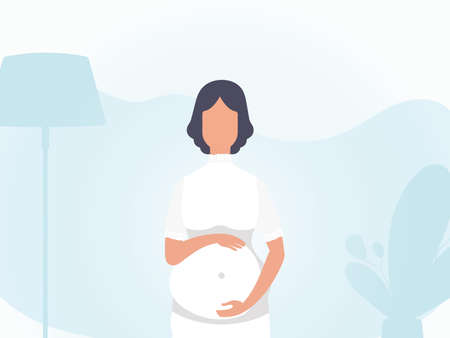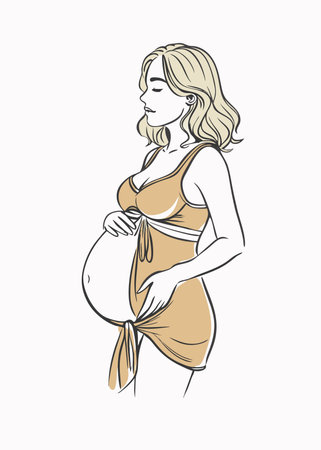1. Introduction to SIDS in the UK
Sudden Infant Death Syndrome (SIDS), often referred to as “cot death” in the UK, is a devastating and sudden loss that profoundly affects families and communities. SIDS describes the unexpected and unexplained death of an apparently healthy baby, usually during sleep, and most commonly occurs in infants under one year of age. While significant progress has been made over recent decades, SIDS remains a leading cause of infant mortality in the UK. According to the latest data from the Office for National Statistics (ONS), there are approximately 200 cases of SIDS reported annually across England and Wales.
The emotional impact on parents and families is immense, often accompanied by feelings of guilt, confusion, and grief. Beyond the immediate family, these tragedies have wider effects on local communities and healthcare professionals who provide support. Understanding the prevalence and context of SIDS within the UK is essential for raising awareness, reducing stigma, and empowering parents with knowledge about prevention strategies.
| SIDS Key Facts (UK) | Details |
|---|---|
| Common Term | Cot Death |
| Age Group Most Affected | Babies under 1 year old |
| Annual Cases (England & Wales) | Approx. 200 |
| Main Occurrence | During sleep, typically at home |
By understanding the unique aspects of SIDS in the UK context—including its frequency, terminology, and profound impact—parents can be better prepared to access up-to-date research and effective prevention strategies tailored to their needs.
2. Key Findings from Recent UK Research
Recent UK-based research on Sudden Infant Death Syndrome (SIDS) continues to provide vital insights for parents and healthcare professionals. Data collected by organisations such as The Lullaby Trust and the Office for National Statistics (ONS) indicate that while SIDS rates have significantly decreased over the past two decades, it remains a critical concern for infant health across England, Scotland, Wales, and Northern Ireland. The following table summarises key statistics and risk factors identified in recent studies:
| Year | SIDS Rate per 1,000 Live Births (UK) | Major Risk Factors Identified |
|---|---|---|
| 2022 | 0.23 | Co-sleeping, parental smoking, soft bedding, overheating |
| 2021 | 0.25 | Prone sleeping position, lack of breastfeeding, exposure to secondhand smoke |
Main Trends Observed
- The overall incidence of SIDS has declined, largely due to national public health campaigns such as “Back to Sleep” and increased parental awareness.
- The highest risk period is between 2 and 4 months of age, with most cases occurring during sleep at night.
- Boys are slightly more at risk than girls according to ONS data.
Identified Risk Factors in Recent UK Studies
- Co-sleeping with an infant on a sofa or armchair substantially increases SIDS risk.
- Exposure to tobacco smoke before and after birth remains a leading preventable risk factor.
- The use of soft bedding materials and overheating have been consistently linked with higher incidence rates.
Regional Differences
Research also highlights some regional disparities within the UK, with higher reported SIDS rates in areas of greater social deprivation and among families with limited access to safe sleep education. Efforts are ongoing to address these inequalities through targeted community support and information campaigns.

3. Recognised Risk Factors and Vulnerable Groups
Understanding the recognised risk factors for Sudden Infant Death Syndrome (SIDS) is essential for parents and caregivers in the UK. Recent research continues to shed light on which infants are most at risk, allowing for better-targeted prevention strategies. Below, we summarise key findings from current evidence and highlight groups that may be particularly vulnerable.
Main Risk Factors Identified in the UK
| Risk Factor | Description |
|---|---|
| Sleep Position | Infants placed to sleep on their stomachs or sides have a higher risk compared to those placed on their backs. |
| Co-sleeping | Sharing a bed, especially with parents who smoke, have consumed alcohol, or are excessively tired, increases SIDS risk. |
| Exposure to Tobacco Smoke | Both prenatal and postnatal exposure to tobacco smoke significantly raises the risk of SIDS. |
| Poor Sleep Environment | Overheating, excessive bedding, or soft mattresses can contribute to unsafe sleeping conditions. |
| Premature Birth/Low Birth Weight | Babies born prematurely or with low birth weight are more vulnerable due to underdeveloped bodily systems. |
| Lack of Breastfeeding | Breastfeeding has been shown to reduce the risk of SIDS compared to formula feeding alone. |
| Younger Maternal Age | Younger mothers may face increased challenges around safe sleep practices and support. |
Vulnerable Groups in the UK Context
The following groups of infants are identified as being more susceptible based on large-scale UK studies:
- Preterm or Low Birth Weight Infants: Require additional monitoring due to immature respiratory and immune systems.
- Babies Exposed to Parental Smoking: Both direct and passive exposure increases vulnerability.
- Babies from Socioeconomically Disadvantaged Backgrounds: Limited access to health education and resources can impact safe sleep practices.
- Infants Living in Overcrowded Housing: Increased likelihood of co-sleeping due to space constraints.
- Boys: Statistically, boys are slightly more at risk than girls for reasons not yet fully understood.
Cultural Considerations for UK Parents
Cultural habits such as bed-sharing and swaddling vary across communities in the UK. Healthcare professionals recommend discussing individual family routines with your health visitor or midwife to ensure all sleep arrangements align with the latest safety guidance. Raising awareness within diverse communities is an ongoing public health priority, ensuring every family receives tailored advice that respects cultural traditions while keeping babies safe.
4. Safe Sleep Guidelines Recommended by the NHS
Ensuring a safe sleep environment for your baby is one of the most important steps parents can take to reduce the risk of Sudden Infant Death Syndrome (SIDS). The National Health Service (NHS) in the UK provides clear, evidence-based recommendations that reflect the latest research findings and are tailored to British households. Below is a review of practical NHS guidelines designed to help parents create an optimal sleep setting for their infant.
Key Safe Sleep Recommendations
| Recommendation | NHS Advice |
|---|---|
| Sleep Position | Always place your baby on their back to sleep, for every sleep – both day and night. This position has been proven to significantly reduce SIDS risk. |
| Sleep Environment | Keep your baby’s cot or Moses basket in your room for at least the first 6 months. Use a flat, firm mattress with a well-fitting sheet. |
| Bedding & Covers | Avoid duvets, quilts, pillows, and cot bumpers. Use lightweight blankets tucked in firmly no higher than the baby’s shoulders, or consider a well-fitted baby sleeping bag. |
| Room Temperature | Maintain a comfortable temperature (16–20°C). Overheating is linked to increased SIDS risk; never use hot water bottles or electric blankets for babies. |
| Co-sleeping Guidance | If you choose to co-sleep, avoid doing so if you have consumed alcohol, smoked, or feel very tired. Never sleep with your baby on a sofa or armchair as this increases danger. |
Creating a Safe Cot Space
- No Soft Toys: Keep soft toys and loose bedding out of the cot to prevent accidental suffocation.
- Cot Position: Place the cot away from radiators and direct sunlight but within easy reach of where you sleep.
- Avoid Smoking: Ensure no one smokes indoors or around your baby; smoke exposure significantly raises SIDS risk.
The Importance of Consistency
Applying these guidelines consistently—every nap and overnight—maximises protection against SIDS. Family members and anyone caring for your child should be familiar with these standards. If you have any concerns or unique circumstances, consult your midwife, health visitor, or GP for personalised advice according to NHS best practices.
5. Parental Strategies and Support
In the UK, parents are encouraged to adopt evidence-based strategies to reduce the risk of SIDS and to seek support from local resources. Understanding and utilising these best practices can provide reassurance and practical guidance for families during the early stages of their babys life.
Key Parental Strategies
| Strategy | Description |
|---|---|
| Safe Sleep Positioning | Always place your baby on their back for every sleep, including naps and at night, as advised by NHS guidelines. |
| Room Sharing | Keep your baby in a separate cot or Moses basket in your room for the first six months. This reduces SIDS risk while promoting bonding. |
| Smoke-Free Environment | Avoid smoking during pregnancy and ensure your home remains smoke-free after birth. Second-hand smoke is a significant risk factor for SIDS. |
| Appropriate Bedding | Use a firm, flat mattress with a well-fitting sheet. Keep cots free from soft toys, pillows, and loose bedding to prevent suffocation hazards. |
| Breastfeeding Support | If possible, breastfeed exclusively for the first six months. Breastfeeding has been shown to lower SIDS risk according to recent UK research. |
Accessing Community Resources and Support Groups
The UK offers a range of resources for parents seeking advice or emotional support regarding SIDS prevention:
- Lullaby Trust: Provides comprehensive information on safer sleep and runs a helpline (0808 802 6869) for personalised guidance.
- NHS Start4Life: Offers online resources and leaflets about infant care, sleep safety, and health visitor services available in your area.
- Health Visitors: Your local health visiting team can offer face-to-face support, practical demonstrations of safe sleeping arrangements, and help connect you with local parent groups.
- Sands (Stillbirth & neonatal death charity): Provides emotional support for families affected by SIDS or other baby loss.
- Online Forums: Mumsnet, Netmums, and BabyCentre UK have active communities where parents can share experiences and receive peer support.
Helplines and Emergency Contacts
| Organisation | Contact Details |
|---|---|
| Lullaby Trust Safer Sleep Advice Line | 0808 802 6869 (Mon–Fri: 10am–5pm) |
| NHS Non-Emergency Helpline | 111 (24 hours) |
| Sands Bereavement Support Helpline | 0808 164 3332 (Mon–Fri: 10am–3pm; Tues & Thurs: 6pm–9pm) |
| Samaritans (Emotional Support) | 116 123 (24 hours) |
Remember: You Are Not Alone
No question or concern is too small when it comes to your babys wellbeing. Reach out to healthcare professionals or trusted community organisations whenever you need advice or reassurance. By connecting with local resources and following proven strategies, UK parents can feel more confident in creating a safe sleep environment for their little ones.
6. Frequently Asked Questions
Addressing Common Concerns and Misconceptions About SIDS
UK parents often have many questions and concerns regarding Sudden Infant Death Syndrome (SIDS). Below, we address some of the most frequently asked questions using current UK research and NHS guidance to provide evidence-based reassurance.
What exactly is SIDS?
SIDS, sometimes referred to as cot death, is the sudden, unexplained death of a seemingly healthy baby, usually during sleep. Although the exact cause remains unknown, research has identified several risk factors and effective preventative strategies.
Can SIDS be completely prevented?
No, SIDS cannot be entirely prevented. However, following safer sleep advice significantly reduces the risk. The number of SIDS cases in the UK has declined sharply due to increased awareness and adherence to guidelines.
Is co-sleeping safe?
Co-sleeping increases the risk of SIDS, especially if parents smoke, have consumed alcohol or drugs, or if the baby was born prematurely or with low birth weight. The safest place for your baby to sleep is in a separate cot or Moses basket in your room for at least the first six months.
Does using a dummy reduce the risk of SIDS?
Some studies suggest that giving your baby a dummy at nap time and bedtime may lower the risk of SIDS. If you choose to use one, wait until breastfeeding is established (usually by 4 weeks), and do not force your baby to take it.
Should I buy special monitors or sleep products?
The NHS does not recommend using home cardiorespiratory monitors or positioners as there is no evidence they prevent SIDS. Focus on following safer sleep advice instead.
Quick Reference: Safer Sleep Myths vs Facts
| Myth | Fact |
|---|---|
| Babies are safest sleeping on their stomachs. | Back sleeping is safest; tummy sleeping increases SIDS risk. |
| A warm room keeps babies safer. | Overheating raises SIDS risk; keep room temperature between 16-20°C. |
| Bedding and soft toys help comfort babies at night. | Bare cots are best—no pillows, quilts or toys until at least age one. |
| SIDS only happens at night. | SIDS can occur during daytime naps as well; always follow safe sleep advice. |
If I have more questions, where can I find support?
You can speak to your health visitor, GP, or contact organisations such as The Lullaby Trust for up-to-date information and support regarding SIDS prevention and safer sleep practices in the UK.


